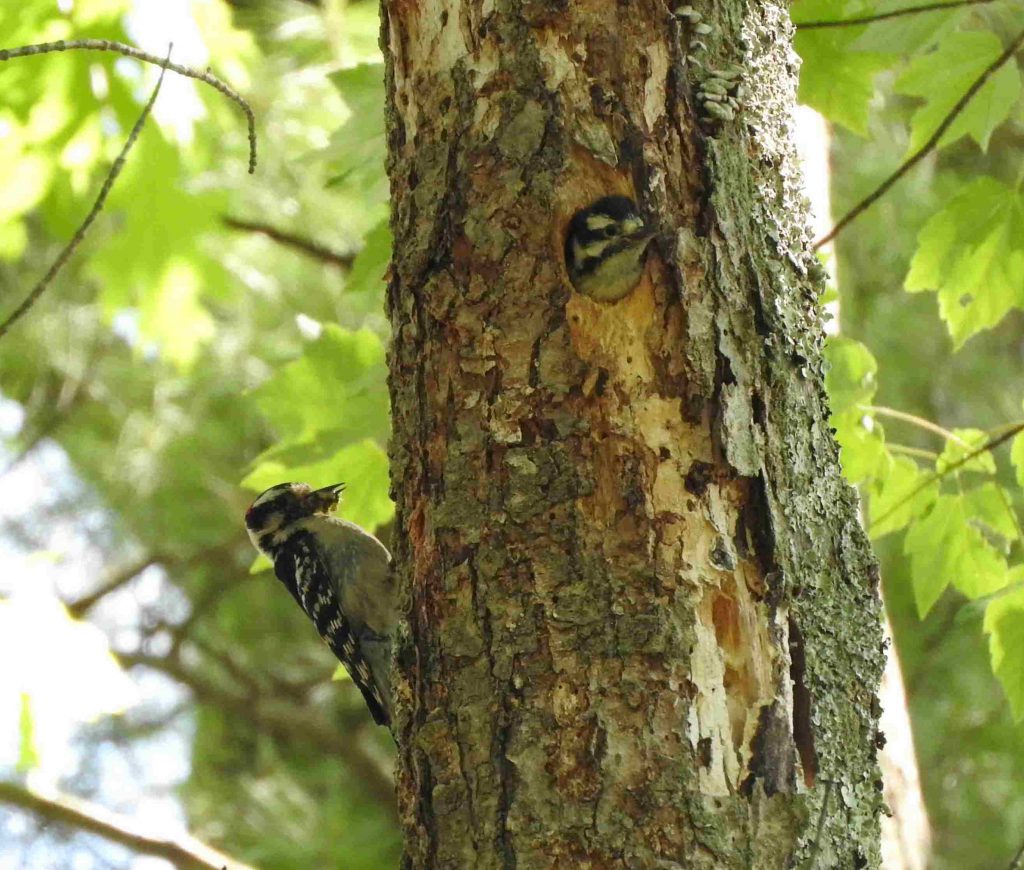Over the last few weeks, I’ve frequently found woodpecker nests on days that I go into the woods. Nest-finding for most forest birds is unbelievably hard, but woodpeckers are pretty obliging. Usually it starts when I hear the incessant twittering of young birds coming from 15-20 feet up. I then look for a dead tree with a hole in it, and wait for an adult to come in with food, like the downy woodpecker in this picture:

For the family to succeed, of course, the adults need to find that food. And, after the young leave the nest – as many have started to do – they have to find food too. The atlas is not designed to investigate this subject, but other research is. For instance, Danielle Schwartz is a UConn undergraduate who planned to spend her summer investigating where in a tree woodpeckers, nuthatches, and creepers spend their time foraging, and whether forest fragmentation affects this aspect of their feeding behaviour.
Unfortunately, most undergraduate research was put on hold this summer due to the pandemic, meaning that she has been unable to do the project the way she originally intended. Instead, she has designed a study that seeks the observations of volunteer birders to help fill the gap. The time commitment is small – all it requires is that we record where and when you observe the bird, the species, and where it was foraging. It can even be done while atlasing.
If you’re able to help, Danielle’s field protocol is here. And a data sheet for her project is here.